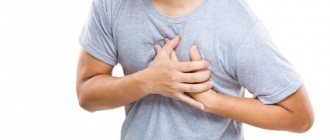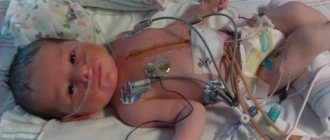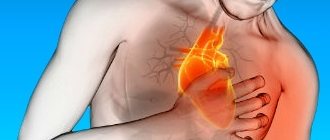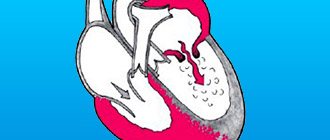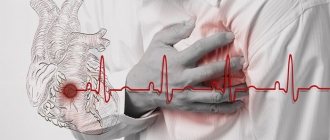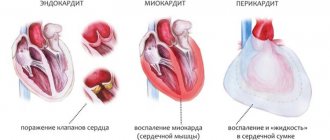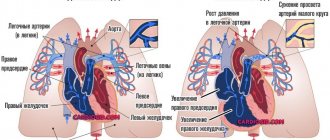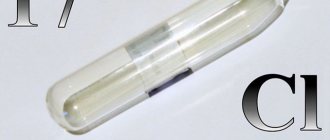Artificial respiration (AR) is an urgent emergency measure if a person’s own breathing is absent or impaired to such an extent that it poses a threat to life. The need for artificial respiration may arise when providing assistance to those who have received sunstroke, drowned, suffered from electric current, as well as in case of poisoning with certain substances.
The purpose of the procedure is to ensure the process of gas exchange in the human body, in other words, to ensure sufficient saturation of the victim’s blood with oxygen and the removal of carbon dioxide from it. In addition, artificial ventilation has a reflex effect on the respiratory center located in the brain, as a result of which independent breathing is restored.
Types of artificial respiration
In medicine, the following types of artificial ventilation are distinguished:
| Name | Description |
| Mouth to mouth | A classic resuscitation procedure performed for forced ventilation of the lungs. |
| Mouth to nose | Air is blown into the victim's lungs through the nose. At the same time, the person’s mouth closes tightly. |
| Manual artificial respiration | Resuscitation manipulations are performed according to the method of Schaeffer, Laborde, Howard, Kallistov, Frank Yves. |
| Automatic | Special equipment is used in inpatient facilities or by emergency doctors. |
| Tracheal intubation | A method of forced ventilation of the lungs, which involves inserting a special probe with a tube into the trachea. It is carried out in case it is impossible to restore the respiratory process using manual methods. |
| Tracheostomy | The procedure is performed in emergency situations. The doctor performs minor surgery to gain direct access to the trachea. |
Artificial respiration is performed when the victim cannot breathe on his own. The method of resuscitation measures is selected taking into account the person’s condition.
Indications and contraindications for first aid
Artificial respiration must be done in any situation when the volume of ventilation of the lungs is critically low. Cardiopulmonary resuscitation will ensure normal gas exchange.
There are the following indications for artificial respiration:
| Name | Description |
| Violation of central regulation of breathing | Malfunctions in the functioning of the respiratory system occur as a result of impaired cerebral circulation. The same thing happens against the background of malignant tumors or after a brain injury. |
| Poisoning of the body | We are talking about drug intoxication or poisoning of the human body by other methods. |
| Damage to the neuromuscular synapse, nerve pathways | The pathological condition most often occurs against the background of a trauma to the cervical spine, a viral infection, or as a result of poisoning of the human body. The same thing occurs after taking certain medications that have a toxic effect. |
| Hypoventilation of the lungs | A pathological condition characterized by incomplete ventilation of the lungs. Blood oxygenation is disrupted and the removal of carbon dioxide from the human body becomes difficult. |
| Bradysystole | The frequency of contractions of the heart ventricles decreases. |
Diseases and damage to the respiratory muscle and heart wall also require cardiopulmonary resuscitation. The same applies to obstructive and restrictive lung disease.
Artificial ventilation is also indicated if, after the administration of certain medications, a person’s breathing stops. This happens during the use of anesthesia during surgery.
AS TO CONTRAINDICATIONS TO ARTIFICIAL RESPIRATION, THERE ARE NO ABSOLUTE PROHIBITIONS.
Among the contraindications are the following pathological conditions:
- extreme chronic cardiac failure;
- futility of cardiopulmonary resuscitation;
- renal, hepatic and respiratory failure;
- cardiac arrest due to a long and severe illness;
- injuries and damage to the body that are incompatible with human life;
- biological death of the victim.
There are limitations that affect the technique of resuscitation procedures (impaired venous return of blood, lung injury).
The essence and meaning of basic cardiopulmonary resuscitation measures
The main task of cardiac massage is to artificially replace myocardial contractions in cases where they have been stopped.
This can be achieved in two ways:
- performing chest compressions by non-specialists, rescuers or emergency medical personnel;
- manual manipulation by a cardiac surgeon directly on the heart during surgery.
Massage manipulations are aimed at maintaining blood circulation through large vessels of the brain, lungs and myocardium. The correct frequency and depth of indirect impact on the heart through the chest wall can provide a 60% release of blood volume compared to the blood flow that occurs with self-contracting myocardium.
Pressure imitates contraction of the heart muscle (systole), and its cessation during complete weakening of the chest - relaxation (diastole).
Hand pressure on the sternum (1), apparatus for indirect cardiac massage (2), internal cardiac massage (3)
The basic complex of resuscitation measures also includes ensuring airway patency and performing artificial pulmonary ventilation (ALV). Their main goal is to maintain gas exchange through forced air renewal.
On a note. It has been established that the main factor in the success of resuscitation is adequate actions during chest compressions. If you are afraid or disdainful to perform artificial respiration, then be sure to give the victim chest compressions, according to the rules described below.
Rules for rescuing a person in cardiac arrest
In the event of cardiac arrest, it is necessary to begin resuscitation immediately, since every minute is important. First of all, you should immediately call an ambulance. Then perform artificial respiration and, if necessary, cardiac massage.
The algorithm of actions is as follows:
- Lay the person flat, back down.
- Place a cushion under your neck.
- Tilt your head back a little.
- Move the lower jaw forward.
- Remove all contents from the mouth (vomit, foam, mucus, foreign body).
- Perform cardiopulmonary resuscitation.
If 2 people provide assistance, it is important that each of them deals separately with the restoration of breathing and heart function.
Once again about the correct algorithm
Unconscious person → “Are you feeling bad? Can you hear me? Do you need help? → No response → Turn over onto your back, lay on the floor → Pull out the lower jaw, look, listen, feel → No breathing → Note the time, start resuscitation, instruct a second person to call an ambulance → Precordial blow → 30 compressions on the lower third of the sternum/2 exhale into the victim’s mouth → After two to three minutes, assess the presence of respiratory movements → No breathing → Continue resuscitation until doctors arrive or within thirty minutes.
MECHANISM AND METHODS OF ARTIFICIAL RESPIRATION
Only through the process of breathing does a person’s blood become saturated with oxygen and carbon dioxide is removed from it. After air enters the lungs, it fills the lung sacs called alveoli. The alveoli are pierced by an incredible number of small blood vessels. It is in the pulmonary vesicles that gas exchange takes place - oxygen from the air enters the blood, and carbon dioxide is removed from the blood.
If the body's supply of oxygen is interrupted, vital activity is at risk, since oxygen plays the “first fiddle” in all oxidative processes that occur in the body. That is why, when breathing stops, artificially ventilating the lungs should be started immediately.
The air entering the human body during artificial respiration fills the lungs and irritates the nerve endings in them. As a result, nerve impulses are sent to the respiratory center of the brain, which are a stimulus for the production of response electrical impulses. The latter stimulate contraction and relaxation of the diaphragm muscles, resulting in stimulation of the respiratory process.
Artificially supplying the human body with oxygen in many cases makes it possible to completely restore the independent respiratory process. In the event that cardiac arrest is also observed in the absence of breathing, it is necessary to perform a closed cardiac massage.
Please note that the absence of breathing triggers irreversible processes in the body within five to six minutes. Therefore, timely artificial ventilation can save a person’s life.
All methods of performing ID are divided into expiratory (mouth-to-mouth and mouth-to-nose), manual and hardware. Manual and expiratory methods are considered more labor-intensive and less effective compared to hardware methods. However, they have one very significant advantage. They can be performed without delay, almost anyone can cope with this task, and most importantly, there is no need for any additional devices and instruments, which are not always at hand.
What kind of poisoning can cause breathing and heartbeat to stop?
Death as a result of acute poisoning can happen from anything. The main causes of death in case of poisoning are cessation of breathing and heartbeat.
Arrhythmia, atrial and ventricular fibrillation and cardiac arrest can be caused by:
- drugs from the group of cardiac glycosides;
- “Obzidan”, “Isoptin”;
- barium and potassium salts;
- some antidepressants;
- organophosphorus compounds;
- quinine;
- hellebore water;
- adrenergic blockers;
- calcium antagonists;
- fluorine.
In what cases is artificial respiration necessary? Respiratory arrest occurs due to poisoning:
- drugs, sleeping pills, inert gases (nitrogen, helium);
- intoxication with substances based on organophosphorus compounds used to control insects;
- curare-like drugs;
- strychnine, carbon monoxide, ethylene glycol;
- benzene;
- hydrogen sulfide;
- nitrites;
- potassium cyanide, hydrocyanic acid;
- "Diphenhydramine";
- alcohol.
In the absence of breathing or heartbeat, clinical death occurs. It can last from 3 to 6 minutes, during which there is a chance of saving the person if you start artificial respiration and chest compressions. After 6 minutes, it is still possible to bring a person back to life, but as a result of severe hypoxia, the brain undergoes irreversible organic changes.
INDICATIONS AND CONTRAINDICATIONS
Indications for the use of ID are all cases where the volume of spontaneous ventilation of the lungs is too low to ensure normal gas exchange. This can happen in many urgent and planned situations:
- For disorders of the central regulation of breathing caused by impaired cerebral circulation, tumor processes of the brain or brain injury.
- For medicinal and other types of intoxication.
- In case of damage to the nerve pathways and neuromuscular synapse, which can be caused by trauma to the cervical spine, viral infections, the toxic effect of certain medications, and poisoning.
- For diseases and damage to the respiratory muscles and chest wall.
- In cases of lung lesions of both obstructive and restrictive nature.
Read also How to remove a tick yourself without harm to health
The need to use artificial respiration is judged based on a combination of clinical symptoms and external data. Changes in pupil size, hypoventilation, tachy- and bradysystole are conditions that require artificial ventilation. In addition, artificial respiration is required in cases where spontaneous ventilation is “turned off” with the help of muscle relaxants administered for medical purposes (for example, during anesthesia for surgery or during intensive care for a seizure disorder).
As for cases where ID is not recommended, there are no absolute contraindications. There are only prohibitions on the use of certain methods of artificial respiration in a particular case. So, for example, if venous return of blood is difficult, artificial respiration modes are contraindicated, which provoke even greater disruption. In case of lung injury, ventilation methods based on high-pressure air injection, etc., are prohibited.
PREPARATION FOR ARTIFICIAL RESPIRATION
Before performing expiratory artificial respiration, the patient should be examined. Such resuscitation measures are contraindicated for facial injuries, tuberculosis, poliomelitis and trichlorethylene poisoning. In the first case, the reason is obvious, and in the last three, performing expiratory artificial respiration puts the person performing resuscitation at risk.
Before starting expiratory artificial respiration, the victim is quickly freed from clothing squeezing the throat and chest. The collar is unbuttoned, the tie is undone, and the trouser belt can be unfastened. The victim is placed supine on his back on a horizontal surface. The head is tilted back as much as possible, the palm of one hand is placed under the back of the head, and the other palm is pressed on the forehead until the chin is in line with the neck. This condition is necessary for successful resuscitation, since with this position of the head the mouth opens and the tongue moves away from the entrance to the larynx, as a result of which air begins to flow freely into the lungs. In order for the head to remain in this position, a cushion of folded clothing is placed under the shoulder blades.
After this, it is necessary to examine the victim’s oral cavity with your fingers, remove blood, mucus, dirt and any foreign objects.
It is the hygienic aspect of performing expiratory artificial respiration that is the most delicate, since the rescuer will have to touch the victim’s skin with his lips. You can use the following technique: make a small hole in the middle of a handkerchief or gauze. Its diameter should be two to three centimeters. The fabric is placed with a hole on the victim’s mouth or nose, depending on which method of artificial respiration will be used. Thus, air will be blown through the hole in the fabric.
ARTIFICIAL RESPIRATION FROM MOUTH TO MOUTH
To perform artificial respiration using the mouth-to-mouth method, the person who will provide assistance must be on the side of the victim’s head (preferably on the left side). In a situation where the patient is lying on the floor, the rescuer kneels. If the victim's jaws are clenched, they are forced apart.
After this, one hand is placed on the victim’s forehead, and the other is placed under the back of the head, tilting the patient’s head back as much as possible. Having taken a deep breath, the rescuer holds the exhalation and, bending over the victim, covers the area of his mouth with his lips, creating a kind of “dome” over the patient’s mouth. At the same time, the victim’s nostrils are pinched with the thumb and index finger of the hand located on his forehead. Ensuring tightness is one of the prerequisites for artificial respiration, since air leakage through the victim’s nose or mouth can nullify all efforts.
After sealing, the rescuer quickly, forcefully exhales, blowing air into the airways and lungs. The duration of exhalation should be about a second, and its volume should be at least a liter for effective stimulation of the respiratory center to occur. At the same time, the chest of the person receiving assistance should rise. If the amplitude of its rise is small, this is evidence that the volume of air supplied is insufficient.
Exhaling, the rescuer unbends, freeing the victim's mouth, but at the same time keeping his head thrown back. The patient should exhale for about two seconds. During this time, before taking the next breath, the rescuer must take at least one normal breath “for himself.”
Please note that if a large amount of air enters the patient's stomach rather than the lungs, this will significantly complicate his rescue. Therefore, you should periodically press on the epigastric region to empty the stomach of air.
How to do closed cardiac massage and forced ventilation?
Closed heart massage and forced ventilation of the lungs are carried out if the victim has not only no breathing, but also no pulse. It is important to know certain rules for performing resuscitation procedures, since you can harm a person by blowing air into the wrong lungs.
Preliminary actions
Artificial respiration will save a person’s life if timely assistance is provided to the victim.
The following steps must first be taken:
- Place the person's back on a hard surface.
- Clear the airways.
- Tilt your head back slightly.
- Unbutton clothing to visually observe the chest.
- Assess the condition of the victim and begin resuscitation procedures.
Preliminary actions should not take more than 10 seconds. Taking into account the person’s condition, the most effective method of artificial respiration is chosen.
Artificial respiration from mouth to mouth
A common method of artificial respiration that can be performed even by a person who does not have a medical education.
Artificial respiration from mouth to mouth. How to do
To assist a victim in a critical situation, the following actions must be taken:
- The victim's oral cavity must be checked for foreign bodies. They should be removed with your finger, after wrapping it with a bandage.
- The tightly closed jaw is opened with the handle of a spoon or other flat object.
- Cover the unconscious person's mouth with gauze or a handkerchief that allows air to pass through. This is necessary to comply with simple hygiene and safety measures.
- The lips should be pressed as tightly as possible to allow more air into the lungs.
- It is recommended to inhale oxygen for 1.5-2 minutes.
- Pull back to let the air escape.
First aid procedures must be repeated 12-15 times per minute. One inhalation cycle should take no more than 4-5 seconds.
Artificial respiration from mouth to nose
The method of artificial respiration from mouth to nose is considered the most effective, since during the manipulation the entry of air into the stomach is completely eliminated.
It is recommended to perform artificial respiration as follows:
- It is necessary to fix the head of the injured person. Place one hand on your forehead and hold your chin with the other.
- The victim's mouth must be tightly closed to prevent oxygen inhaled through the nose from escaping.
- Take a deep breath and exhale air with maximum force into the victim’s nose.
- After taking a few breaths, you should check the person's pulse.
It is important to observe the chest, which will swell if all movements are performed correctly.
Features of the procedure in children
Cardiopulmonary resuscitation is more difficult for children, since there is a high probability of breaking the victim’s ribs. You should not hesitate with artificial respiration if the child does not show signs of life. The life of a small patient depends on the speed of providing first aid.
Artificial respiration should be given to the child through the mouth and nose, while performing indirect cardiac massage with two fingers or one hand.
Cardiopulmonary resuscitation in children involves the following actions:
- Open the chest.
- Clear the airways. Remove foreign objects from the mouth with your finger, after wrapping it with a bandage.
- Air should be blown into the child's respiratory tract for 1-1.5 seconds.
- Take 5 breaths, after each it is necessary to control the movement of the chest and allow oxygen to escape.
- If there is no reaction, repeat the manipulations.
- If the chest does not move, it means that there is a foreign object in the respiratory system that must be quickly removed. To do this, it is recommended to make 5 sharp blows with your hand between the shoulder blades to the side of the head. Then check your mouth again.
- If the chest moves, continue resuscitation efforts and move on to cardiac muscle massage.
- Press with your hand in the center of the chest. For newborn babies, heart massage is performed with two fingers. For fearful children, pressure is applied to the chest with one hand.
- It is necessary to press not hard, but often (100 times per minute). After every 30 pressures, it is necessary to continue artificial ventilation of the lungs with 2 breaths for 1-1.5 seconds.
All manipulations should be performed before the ambulance arrives. If the child has come to his senses, he should not be left alone. It is necessary to wrap him in a blanket and lay him on his side. Cardiopulmonary resuscitation may be needed again at any time.
Carrying out cardiopulmonary resuscitation together
Cardiopulmonary resuscitation is recommended to be carried out by two people, since manipulations require a lot of effort.
It is important to adhere to the following sequence:
- Kneel near the injured person and take a stable position.
- Immediately determine the pressure point.
- Cross your palms and place them on your chest, connect your fingers, straighten your arms.
- Make 30 strong compressions so that the chest drops 4-5 cm.
- Then take 2 breaths.
It is important to continue cardiopulmonary resuscitation until the ambulance arrives.
Determining the correctness of resuscitation
You can determine how correctly emergency assistance was provided by certain external signs:
- reaction of pupils to light;
- the skin acquires a pink tint;
- a pulse appears in the area of the peripheral arteries;
- the victim slowly comes to his senses and begins to breathe on his own.
In the absence of a positive effect, a person’s biological death occurs; many processes are irreversible; brain tissue dies. The first signs of rigor mortis appear, and after a while, cadaveric spots appear.
ARTIFICIAL RESPIRATION FROM MOUTH TO NOSE
This method of artificial ventilation is carried out if it is not possible to properly unclench the patient’s jaws or there is an injury to the lips or oral area.
The rescuer places one hand on the victim’s forehead and the other on his chin. At the same time, he simultaneously throws back his head and presses his upper jaw to the lower. With the fingers of the hand that supports the chin, the rescuer must press the lower lip so that the victim’s mouth is completely closed. Taking a deep breath, the rescuer covers the victim’s nose with his lips and forcefully blows air through the nostrils, while watching the movement of the chest.
After artificial inspiration is completed, you need to free the patient's nose and mouth. In some cases, the soft palate may prevent air from escaping through the nostrils, so when the mouth is closed, there may be no exhalation at all. When exhaling, the head must be kept tilted back. The duration of artificial exhalation is about two seconds. During this time, the rescuer himself must take several exhalations and inhalations “for himself.”
Symptoms of cardiac and respiratory arrest
Simple steps will help determine the functioning of the heart and respiratory system.
In this case, the following clinical signs are detected:
| Name | Description |
| No pulse | You can determine whether there are heartbeats or not by placing two fingers on your neck under the cheekbones. On the left side of the chin is the carotid artery. |
| Lack of breathing | You can listen to the work of the heart with your ear, placing it on your chest. You can also determine breathing with your hand by placing it on your chest in the area of your heart. Place a mirror near the victim's mouth. If it fogs up, there is breathing. |
| Pupil reaction | It is necessary to lift the eyelid and shine a flashlight on the pupil. If there is no reaction, then the heart has stopped. |
It is important to start artificial respiration immediately after a person loses consciousness and cardiac arrest.
HOW LONG DOES ARTIFICIAL RESPIRATION BE CARRIED OUT?
There is only one answer to the question of how long ID should be carried out. You should ventilate your lungs in this mode, taking breaks for a maximum of three to four seconds, until full spontaneous breathing is restored, or until the doctor appears and gives other instructions.
At the same time, you should constantly ensure that the procedure is effective. The patient's chest should swell well, and the facial skin should gradually turn pink. It is also necessary to ensure that there are no foreign objects or vomit in the victim’s respiratory tract.
Please note that due to the ID, the rescuer himself may experience weakness and dizziness due to a lack of carbon dioxide in the body. Therefore, ideally, air blowing should be done by two people, who can alternate every two to three minutes. If this is not possible, the number of breaths should be reduced every three minutes so that the person performing resuscitation normalizes the level of carbon dioxide in the body.
During artificial respiration, you should check every minute to see if the victim’s heart has stopped. To do this, use two fingers to feel the pulse in the neck in the triangle between the windpipe and the sternocleidomastoid muscle. Two fingers are placed on the lateral surface of the laryngeal cartilage, after which they are allowed to “slide” into the hollow between the sternocleidomastoid muscle and the cartilage. This is where the pulsation of the carotid artery should be felt.
If there is no pulsation in the carotid artery, chest compressions in combination with ID should be started immediately. Doctors warn that if you miss the moment of cardiac arrest and continue to perform artificial ventilation, it will not be possible to save the victim.
Read also First aid for arrhythmia, symptoms and treatment
Indirect cardiac massage
NMS is the basis of resuscitation measures. It is its implementation that ensures the minimum necessary blood supply to the brain and heart, so it is very important to know what actions are performed during indirect cardiac massage.
Carrying out NMS should begin immediately after identifying the victim as lacking consciousness and normal breathing. For this:
- Place the heel of the palm of your right hand (for left-handers, the left hand) on the center of the victim’s chest. It should lie exactly on the sternum, slightly below its middle.
- Place your second palm on top of the first, then interlace their fingers. No part of your hand should touch the victim's ribs, as this increases the risk of fracture when performing NMS. The base of the lower palm should lie strictly on the sternum.
- Position your torso so that your arms rise above the victim’s chest perpendicularly and are extended at the elbow joints.
- Using your body weight (not arm strength), bend the victim's chest to a depth of 5-6 cm, then allow it to restore its original shape, that is, fully straighten, without removing your palm from the sternum.
- The frequency of such compressions is 100–120 per minute.
Current recommendations for CPR allow only NMS.
Performing NMS is hard physical work. It has been proven that after about 2–3 minutes, the quality of its performance by one person decreases significantly. It is therefore recommended that, if possible, people providing assistance change each other every 2 minutes.
Algorithm for indirect cardiac massage
Errors when performing NMS
- Delay in the start of the event. For a person in a state of clinical death, every second of delay in starting CPR can result in a lower chance of resumption of spontaneous circulation and a worsening neurological prognosis.
- Long breaks during NMS. It is allowed to interrupt compression for no longer than 10 seconds. This is done for ID, changing caregivers, or when using a defibrillator.
- Insufficient or too great compression depth. In the first case, the maximum possible blood flow will not be achieved, and in the second, the risk of traumatic injuries to the chest increases.
FEATURES OF THE PROCEDURE IN CHILDREN
When performing artificial ventilation for babies under one year of age, the mouth-to-mouth and nose technique is used. If the child is older than one year, the mouth-to-mouth method is used.
Small patients are also placed on their back. For babies under one year old, place a folded blanket under their back or slightly raise their upper body, placing a hand under their back. The head is thrown back.
The person providing assistance takes a shallow breath, seals her lips around the child’s mouth and nose (if the baby is under one year old) or just the mouth, and then blows air into the respiratory tract. The volume of air blown in should be less, the younger the patient. So, in the case of resuscitation of a newborn, it is only 30-40 ml.
If a sufficient volume of air enters the respiratory tract, chest movement occurs. After inhaling, you need to make sure that the chest drops. If you blow too much air into your baby's lungs, this can cause the alveoli of the lung tissue to rupture, causing air to escape into the pleural cavity.
The frequency of insufflations should correspond to the breathing frequency, which tends to decrease with age. Thus, in newborns and children up to four months, the frequency of inhalations and exhalations is forty per minute. From four months to six months this figure is 40-35. In the period from seven months to two years - 35-30. From two to four years it is reduced to twenty-five, in the period from six to twelve years - to twenty. Finally, in a teenager aged 12 to 15 years, the respiratory rate is 20-18 breaths per minute.
MANUAL METHODS OF ARTIFICIAL RESPIRATION
There are also so-called manual methods of artificial respiration. They are based on changing the volume of the chest due to the application of external force. Let's look at the main ones.
SYLVESTER'S METHOD
This method is most widely used. The victim is placed on his back. A cushion should be placed under the lower part of the chest so that the shoulder blades and the back of the head are lower than the costal arches. In the event that artificial respiration is performed using this method by two people, they kneel on either side of the victim so as to be positioned at the level of his chest. Each of them holds the victim’s hand in the middle of the shoulder with one hand, and with the other just above the level of the hand. Next, they begin to rhythmically raise the victim’s arms, stretching them behind his head. As a result, the chest expands, which corresponds to inhalation. After two or three seconds, the victim’s hands are pressed to the chest, while squeezing it. This performs the functions of exhalation.
In this case, the main thing is that the movements of the hands are as rhythmic as possible. Experts recommend that those performing artificial respiration use their own rhythm of inhalation and exhalation as a “metronome”. In total, you should do about sixteen movements per minute.
ID using the Sylvester method can be performed by one person. He needs to kneel behind the victim’s head, grab his arms above the hands and perform the movements described above.
For broken arms and ribs, this method is contraindicated.
SCHEFFER METHOD
If the victim's arms are injured, the Schaeffer method can be used to perform artificial respiration. This technique is also often used for the rehabilitation of people injured while on the water. The victim is placed prone, with his head turned to the side. The one who performs artificial respiration kneels, and the victim’s body should be located between his legs. Hands should be placed on the lower part of the chest so that the thumbs lie along the spine and the rest rest on the ribs. When exhaling, you should lean forward, thus compressing the chest, and while inhaling, straighten, stopping the pressure. The elbows are not bent.
Please note that this method is contraindicated for fractured ribs.
LABORD METHOD
The Laborde method is complementary to the Sylvester and Schaeffer methods. The victim's tongue is grabbed and rhythmically stretched, imitating breathing movements. As a rule, this method is used when breathing has just stopped. The resistance of the tongue that appears is evidence that the person’s breathing is being restored.
KALLISTOV METHOD
This simple and effective method provides excellent ventilation. The victim is placed prone, face down. A towel is placed on the back in the area of the shoulder blades, and its ends are passed forward, threaded under the armpits. The person providing assistance should take the towel by the ends and lift the victim’s torso seven to ten centimeters from the ground. As a result, the chest expands and the ribs rise. This corresponds to inhalation. When the torso is lowered, it simulates exhalation. Instead of a towel, you can use any belt, scarf, etc.
HOWARD'S METHOD
The victim is positioned supine. A cushion is placed under his back. Hands are moved behind the head and extended. The head itself is turned to the side, the tongue is extended and secured. The one who performs artificial respiration sits astride the victim’s thigh area and places his palms on the lower part of the chest. With your fingers spread, you should grab as many ribs as possible. When the chest is compressed, it simulates inhalation; when the pressure is released, it simulates exhalation. You should do twelve to sixteen movements per minute.
FRANK WILLOW'S METHOD
This method requires a stretcher. They are installed in the middle on a transverse stand, the height of which should be half the length of the stretcher. The victim is placed prone on the stretcher, the face is turned to the side, and the arms are placed along the body. The person is tied to the stretcher at the level of the buttocks or thighs. When lowering the head end of the stretcher, inhale; when it goes up, exhale. Maximum breathing volume is achieved when the victim's body is tilted at an angle of 50 degrees.
NIELSEN METHOD
The victim is placed face down. His arms are bent at the elbows and crossed, after which they are placed palms down under the forehead. The rescuer kneels at the victim’s head. He places his hands on the victim’s shoulder blades and, without bending them at the elbows, presses with his palms. This is how exhalation occurs. To inhale, the rescuer takes the victim’s shoulders at the elbows and straightens, lifting and pulling the victim towards himself.
How to start the indirect myocardial massage procedure
Checking for breathing using vision, hearing and tactile sensation on the skin of the cheek
Before we talk directly about the technique of heart massage itself, we will pay attention to the preparatory actions, which will simultaneously serve as permission to perform it:
- Quickly inspect the scene to avoid getting into a similar situation yourself, for example, getting an electric shock from a bare wire.
- Check the victim's consciousness. It is forbidden to shake him violently, hit him on the cheeks, pour water on him, let him sniff ammonia or ammonia, or waste time looking for and applying a mirror to his lips. Firmly squeeze the person who you think is lifeless by the arm or leg, carefully jog and call out to him loudly.
- If there is no reaction, make sure the victim is lying on a hard, level surface and turn him onto his back. If there is no need, then do not move or carry a person in trouble anywhere.
- Open the victim’s mouth slightly and tilt your ear towards him so that you can see his chest from the side and above; if you can, then try to feel the pulse where you can and know how. For 10 seconds, examine your breathing using the “SOS – listen, feel, see” method (see photo above). Here's what it is:
- C – listen with your ear for sounds of inhalation and exhalation;
- O – try to feel the presence of exhalation with your cheek;
- C – look at the chest, whether it moves or not.
Why is the need for cardiac massage primarily determined by the absence of respiratory cycles, and not by cardiac arrest?
The algorithm for providing assistance begins not with palpating the pulse, but with listening to breathing
- Firstly , it is difficult for ordinary people to quickly feel a “healthy” pulse on the wrist even in normal situations, let alone in extreme conditions, in which, in addition to weak beating and/or too infrequent beats, it is recommended to palpate the heart rate on the carotid artery.
- Secondly , a frightened person may be afraid to open the victim’s eyes to determine the size of the pupils, moisture and transparency of the cornea, or may not be able to correctly assess these characteristics.
- Thirdly , because loss of breathing quite quickly ends in cardiac arrest and loss of consciousness. If there is no breathing, the main thing is to ensure access of blood to the brain and prevent its cortex from dying.
HARDWARE METHODS OF ARTIFICIAL RESPIRATION
For the first time, hardware methods of artificial respiration began to be used back in the eighteenth century. Even then, the first air ducts and masks appeared. In particular, doctors proposed using fireplace bellows to blow air into the lungs, as well as devices created in their likeness.
The first automatic ID machines appeared at the end of the nineteenth century. At the beginning of the twenties, several types of respirators appeared at once, which created intermittent vacuum and positive pressure either around the entire body, or only around the patient’s chest and abdomen. Gradually, respirators of this type were replaced by air-injection respirators, which had less solid dimensions and did not impede access to the patient’s body, allowing medical procedures to be performed.
All ID devices existing today are divided into external and internal. External devices create negative pressure either around the patient's entire body or around his chest, thereby inhaling. Exhalation in this case is passive - the chest simply collapses due to its elasticity. It can also be active if the device creates a positive pressure zone.
Read also Mercury vapor poisoning. Symptoms, treatment, first aid, consequences
With the internal method of artificial ventilation, the device is connected through a mask or intubator to the respiratory tract, and inhalation is carried out by creating positive pressure in the device. Devices of this type are divided into portable, intended for work in “field” conditions, and stationary, the purpose of which is long-term artificial respiration. The former are usually manual, while the latter operate automatically, driven by a motor.
COMPLICATIONS OF ARTIFICIAL RESPIRATION
Complications due to artificial respiration occur relatively rarely and even if the patient is on artificial ventilation for a long time. Most often, undesirable consequences concern the respiratory system. Thus, due to an incorrectly chosen regimen, respiratory acidosis and alkalosis can develop. In addition, prolonged artificial respiration can cause the development of atelectasis, since the drainage function of the respiratory tract is impaired. Microatelectasis, in turn, can become a prerequisite for the development of pneumonia. Preventative measures that will help avoid the occurrence of such complications are careful respiratory hygiene.
If a patient breathes pure oxygen for a long time, this can cause pneumonitis. The oxygen concentration should therefore not exceed 40-50%.
In patients who have been diagnosed with abscess pneumonia, alveolar ruptures may occur during artificial respiration.
What can and cannot be done if resuscitation is necessary?
According to the legal aspects of first aid, you have every right to assist an unconscious person, since he cannot give his consent or refuse. Regarding children, it is a little more complicated - if the child is alone, without adults or without official representatives (guardians, parents), then you are obliged to start resuscitation. If the child is with parents who actively protest and do not allow touching the unconscious child, all that remains is to call an ambulance and wait for the rescuers to arrive on the sidelines.
It is strictly not recommended to provide assistance to a person if there is a threat to your own life, including if the patient has open, bloody wounds and you do not have gloves. In such cases, everyone decides for themselves what is more important to them - to protect themselves or to try to save the life of another.
You cannot leave the scene of an accident if you see a person unconscious or in serious condition - this will be classified as leaving in danger. Therefore, if you are afraid to touch a person who may be dangerous to you, you must at least call him an ambulance.
Complications of artificial respiration
When a victim is on mechanical ventilation for a long time , the risk of negative consequences increases:
- air entering the stomach;
- when the air duct is inserted, vomiting occurs;
- possible damage to the mucous membrane;
- pneumothorax develops (air or gases accumulate in the pleural area);
- bilateral eustachitis (the mucous membrane of the auditory tube is affected by the inflammatory process);
- emphysema (a disease characterized by damage to lung tissue).
The blood supply to the kidneys, liver and spleen deteriorates. The muscles of the respiratory system atrophy, intracranial pressure increases. An incorrectly selected method of artificial ventilation of the lungs entails the development of acidosis and alkalosis. Careful hygiene of the respiratory system will help prevent possible complications of resuscitation.
When to end CPR
If the CPR technique has been carefully followed, then positive dynamics will arise fairly quickly:
- the complexion improves, it again acquires a pink tint;
- the appearance of an independent respiratory process is observed, breathing becomes more uniform over time;
- pupils constrict;
- the victim begins to speak.
If positive dynamics are observed, it is necessary to continue resuscitation actions for 5-10 minutes, gradually slowing down the rhythm. Stopping resuscitation too early can have a negative impact on health and even result in death.
When the victim has fully regained consciousness, you need to take care of his peace of mind, you need to tell him that the worst is over, medical workers will arrive soon. The resulting panic and excitement have a detrimental effect on well-being.
Signs of success
Correct performance of cardiopulmonary resuscitation results in the following symptoms appearing in the victim:
- blood pressure increases;
- heart rate appears;
- spontaneous breathing is restored;
- pupils constrict;
- the skin becomes less pale.
It is recommended to perform resuscitation procedures for at least 10 minutes, or better yet, until an ambulance arrives. Even if palpitations appear, you should continue to perform artificial respiration for at least 1.5 hours.
When to stop resuscitation?
It should be noted that pulmonary-cardiac resuscitation should be continued until the medical team arrives.
But if the heartbeat and lung function are not restored within 15 minutes of resuscitation, then they can be stopped.
Namely:
- when there is no pulse in the area of the carotid artery in the neck;
- breathing is not performed;
- dilated pupils;
- the skin is pale or bluish.
And of course, cardiopulmonary resuscitation measures are not carried out if a person has an incurable disease, for example, oncology.
How long does it take to resuscitate a person?
Artificial respiration should be performed for 30 minutes after the person has lost consciousness or cardiac arrest has occurred.
IF THERE IS NO EFFECTIVENESS AFTER RESUSCIVATIVE MANIPULATIONS, VEGETATIVE DEATH OCCURS.
Brain death is accompanied by characteristic clinical signs, including changes in the shape of the pupil. It narrows when you press on the eyeball.
How to determine whether resuscitation is performed correctly?
- The chest expands and contracts with passive inhalations.
- A pulsation is felt in the carotid artery during compression.
- Blood flow appears, pressure stabilizes, the skin loses its pallor, and the pupils narrow.
- If a heartbeat is heard, the patient is supported with artificial respiration until the doctors arrive.
Raising the abdomen instead of the chest indicates that an air mass has entered the stomach. It is necessary to squeeze the stomach and turn the body to one side.
World methods of artificial respiration
There are world-wide methods of artificial respiration that are performed manually. The volume of the chest changes due to applied external forces.
| Name | Description |
| Schaeffer method | A technique of artificial lung ventilation, which is used if a person has injured arms or was injured while in water. The victim is placed face down, head turned to the side. The rescuer kneels so that the person's body is between his legs. Place your hands on the lower chest, thumbs along the spine, and the rest on the ribs. When exhaling, you need to lean forward and compress your chest. When inhaling, return to the starting position. When performing manipulations, do not bend your arms at the elbows. |
| Laborde method | Use immediately after breathing stops. It is necessary to grab the victim’s tongue and pull it out with rhythmic movements. By simulating breathing movements, a person comes to his senses. The restoration of the respiratory process is indicated by the resistance of the tongue when performing the described manipulations. |
| Kallistov method | A simple and effective method for ventilation. The victim is placed face down. A towel is placed on the back in the area of the shoulder blades, the ends are brought forward under the arms. The rescuer holds the towel by the ends, raising and lowering the victim’s torso to a height of 8-9 cm. When lifting, the chest expands, the ribs rise, the position corresponds to inhalation. At the moment of lowering the victim's torso, the exhalation of oxygen is simulated. The towel can be replaced with a belt or scarf. |
| Howard's method | Place the victim on his back with a bolster. Place your hands behind your head, stretching them forward. Turn your head to the side, pull out your tongue and fix it. The rescuer sits on the thigh area, places his palms on the lower part of the chest, spreads his fingers. It is recommended to compress the chest to inhale and release it to exhale. It is necessary to perform 12-16 manipulations per minute. |
| Frank Eve's method | The artificial respiration method involves the use of a stretcher. They must be placed on a cross stand in the middle. The height should be no more than half the length of the stretcher. The victim is placed face down on them with his face turned to the side. Place your arms along your body. The person must be secured in the hips and buttocks to the stretcher. When the head end of the structure is lowered, an inhalation is made, when it rises, an exhalation is carried out. When tilted at 50 degrees, maximum breathing volume is observed. |
| Nielsen method | The victim must be placed on the floor with his stomach down. Turn your head to the side. Place your arms under your head so that they are bent and crossed. The person providing emergency assistance kneels. Use your palms to press on the chest in the area of the shoulder blades to exhale. Next, he takes the victim by the shoulders and lifts him up, inhaling. |
The effectiveness of such methods is significantly lower compared to the classical method of artificial respiration. In each case, great physical effort and effort is required. It will be hard for one person to cope with. But they still increase the chances of saving the victim.
Typical mistakes in artificial respiration
Not everyone can do artificial respiration. If a person is not trained, he may make mistakes, which can be dangerous for the injured person.
Everyone should know about them:
| Name | Description |
| Delay in providing emergency assistance | Don't hesitate with first aid. There are 8 minutes left before the vital systems of the human body fail. |
| Incorrect sequence of artificial pulmonary ventilation (ALV) | First of all, it is necessary to clear the airways and clean the oral cavity. Weak tightness. The lips should be pressed as tightly as possible, only then the lungs will receive a sufficient amount of oxygen. |
| Wasting time | In some situations, they try to open the victim’s mouth, but this cannot be done. In this situation, it is necessary to begin resuscitation through the nose. |
| Long pauses between breaths, small volume of air blown in | A break is necessary for a short rest. Artificial respiration should be done quickly. Blow air for 1.5-2 seconds, 120 times per minute. |
| Lack of control | It is important to monitor the movement of the sternum. This is the first indicator that cardiopulmonary resuscitation is being performed correctly. |
| Simultaneous performance of mechanical ventilation and closed lung massage | In this situation, oxygen does not enter the blood. |
You don't have to be a professional to save a person's life. It is enough to master simple cardiopulmonary resuscitation skills so that the victim survives until the ambulance arrives.
Artificial respiration and cardiac massage do not always give positive results. Manipulations can be stopped if the victim shows no signs of life within 30 minutes after the start of resuscitation. That is why it is necessary to start artificial ventilation as early as possible, unless there are certain contraindications.
Rules
For effective resuscitation, it is better to remove or unfasten all tight clothing. It is important to know that when a person loses consciousness, all muscles relax, including the tongue. You need to take this into account and not let it get into your throat, otherwise the airways will be blocked. You also need to clean the oral cavity, for example, from vomit, etc.
Execution technique
The injured person's head should be raised up and the lower jaw pushed down, all while lying on his back. If after this breathing has not been restored, since there are no obstacles to the flow of air, then ventilation of the lungs should be carried out.
Before starting resuscitation, you need to make sure that the person is placed on a hard surface. That is, it can be the floor of a room, asphalt or earth. Only on a hard surface will pressure be applied to the heart.
We can conclude that a sandy surface (on the beach) is not suitable, and if resuscitation measures are carried out on a bed, this will also not be effective. The soft surface will sag. If an accident happened on the beach, then you urgently need to find a hard surface and lay the person there, or you can put something hard, for example, boards.
You can also raise the victim's lower limbs by 30-50 cm.
It is good if the entire pulmonary-cardiac resuscitation algorithm is carried out by 2 people. Then one will do closed cardiac resuscitation, and the second will perform ventilation. There may be such an algorithm: 4-5 pressures on the victim’s exhalation and one injection. For one person this set of actions is quite difficult, so you can do this for 15 pushes and 2 breaths.
